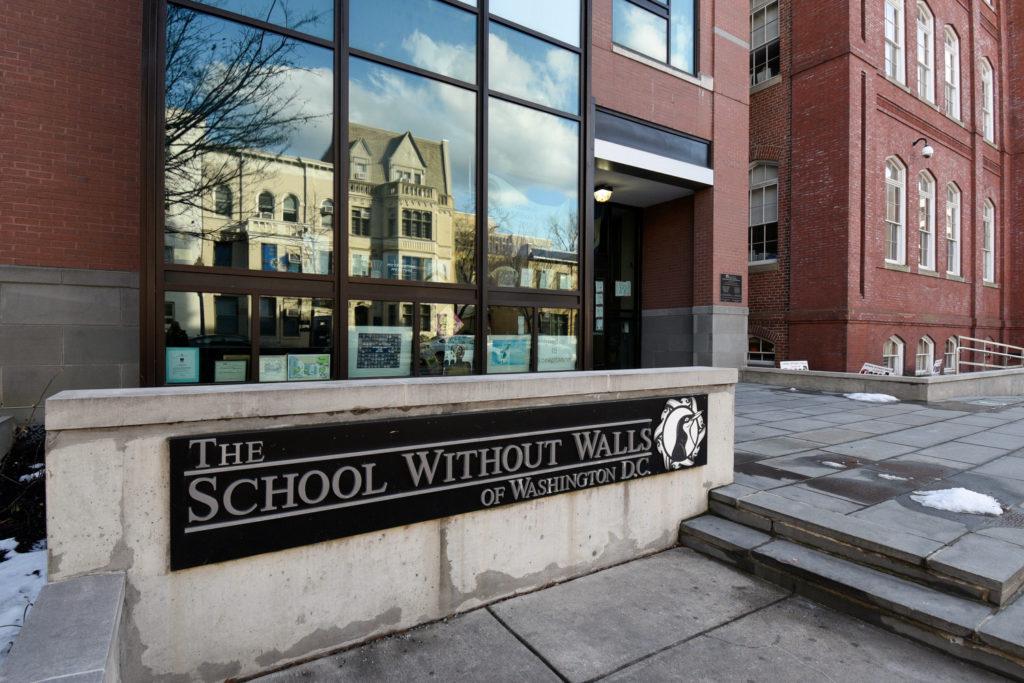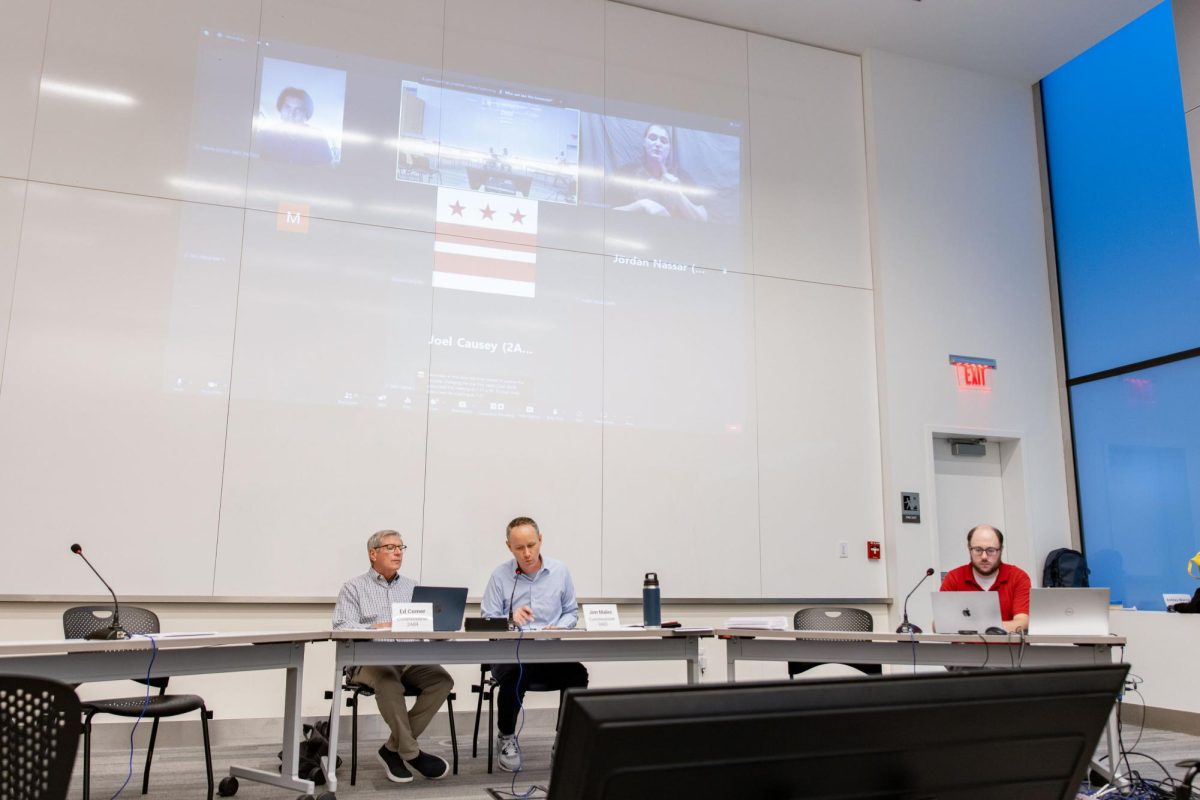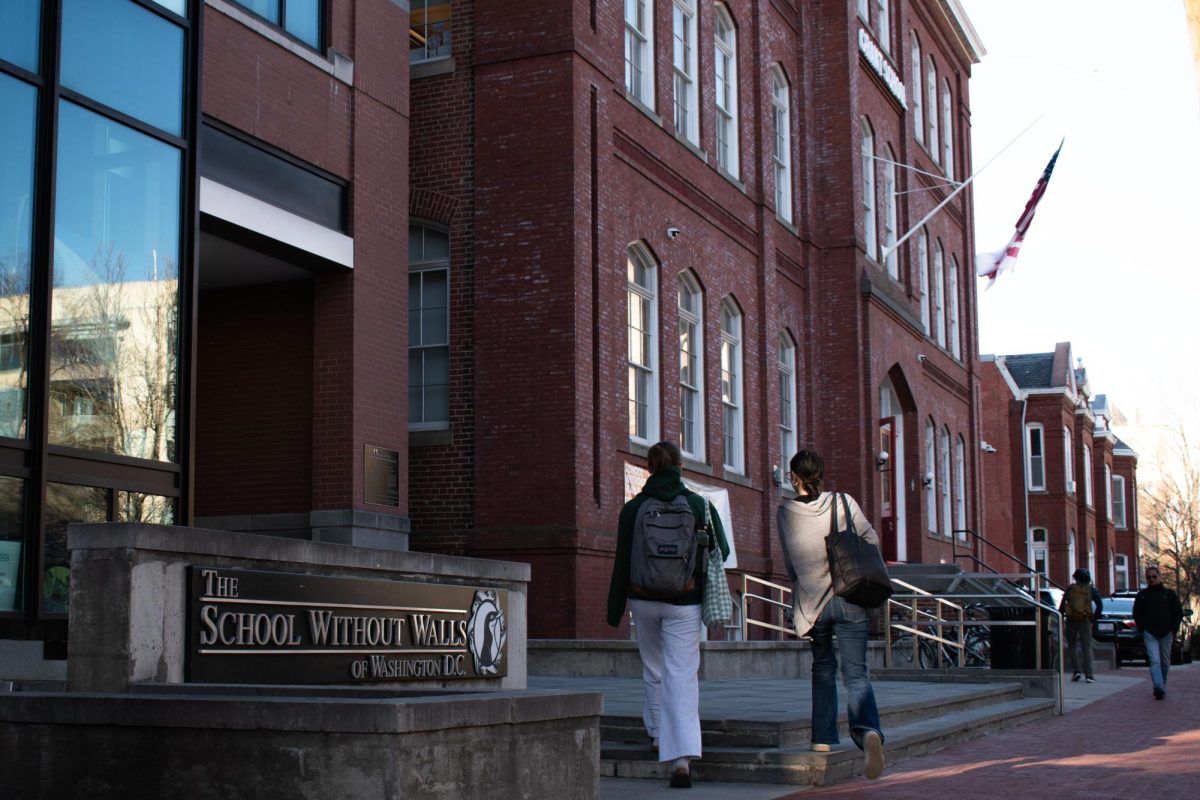School Without Walls High School welcomed about 25 percent of its student body back to Foggy Bottom last week as the facility begins transitioning from online to in-person instruction.
A presentation detailing the school’s reopening plans states that 150 students returned to classrooms at the high school last week to attend three days of in-person instruction from Monday through Wednesday in classrooms capped at 11 students. Education and public health experts said they support the school’s decision to return to in-person learning for freshmen and students requiring extra academic support but added that students need to abide by health guidelines to limit the spread of COVID-19 and emerging variants.
“We are excited to welcome back staff and students for SWW in-person learning,” a release issued by Acting Principal Sylvia Isaac late last month states. “It has been almost one year since we have implemented an academic program in the building.”
The school shuttered back in March following the first case of COVID-19 in D.C. and days before GW students cleared Foggy Bottom to self-isolate at home.
The presentation states students will attend online learning sessions in “CARE Classrooms,” where support staff and substitute teachers will supervise each group of students from 9 a.m. to 4 p.m. every Monday and Tuesday. Administrators restricted teachers to one day of “non-instructional,” in-person activity on Wednesday, when they can meet students divided into cohorts from 9 a.m. to noon, according to the presentation.
“Our teachers are planning exciting and relevant topics designed to pique student interest and engagement during class sessions,” the release states. “The purpose of the Wednesday sessions is to introduce students to School Without Walls and to allow our new students to get to know one another outside of the typical subject area courses.”
For the 25 percent of students eligible to return, administrators prioritized freshmen and “at-risk” students, like those experiencing homelessness, students requiring special education, English language learners and students with low attendance or failing grades, according to the presentation. The presentation states a “Reopening Community Corps” – comprised of faculty, staff, students, parents and community members – advised administrators on the models and impacts of reopening.
The School Without Walls, a public magnet school, follows reopening parameters set by D.C. Public Schools, which also reopened limited in-person instruction last week.
As schools reopened, The Washington Teachers’ Union considered a strike to protest the health risks teachers faced in returning to classrooms during the pandemic. DCPS fired former School Without Walls Principal Richard Trogisch in October after he refused to reopen the school if classrooms weren’t able to meet COVID-19 safety protocols, like proper ventilation.
School administrators said they identified “health and safety issues” with the building’s heating, ventilation and air conditioning system late last month and notified the DCPS Facilities team who “prioritized” and started working on the system, according to a press release. The release states administrators were “optimistic” that the issues would be fixed before reopening.
James Blasingame, a professor of English at Arizona State University and a former high school principal and teacher, said he’s glad the school is prioritizing opening the school for students with specific learning needs. He said students with learning disabilities have a harder time learning online because the accommodations they receive in school, like paraprofessionals who assist with unique support, are more difficult to access away from the classroom.
Blasingame said he supports the decision to include freshmen in the first stage of reopening because their adolescence is a “sweet spot” in human brain development and requires more socialization. He said classrooms are best suited to teach freshmen new subjects and to get introduced to extracurricular activities.
“We’ve got to have them doing music and sports and debate and challenging their intellects and getting them to do lots of things – social activism, community service,” Blasingame said. “They’re forming their values, they’re forming their work ethics, they’re forming their personalities and their identities. The iron is hot. Strike now, ninth graders.”
He said there’s a level of urgency to bring youth back into schools due to political pressure from national leaders, but some school districts around the nation quickly shut back down after reopening because of virus transmission. He said school districts with more funding like The School Without Walls have better access to safety measures like plastic barriers and cleaning staff, widening education inequity gaps between schools in low-income neighborhoods.
Melissa Hawkins, a professor of health studies at American University and the director of AU’s Public Health Scholars Program, said as long as school community members remain unvaccinated against COVID-19 and its more contagious variants, reopening schools will carry public health risk. She said the Journal of the American Medical Association recently released “reassuring” evidence that elementary, middle and high schools around the country can minimize transmission after implementing and enforcing COVID-19 safety protocols.
“That’s really the key,” Hawkins said. “It’s not that schools aren’t a place of greater risk of transmission, it’s that if mask-wearing, physical distancing, classrooms that can accommodate smaller numbers, frequent hand-washing and these kinds of public health tools that we know have been very effective are able to be in place and implemented, then it can be a safer environment.”







